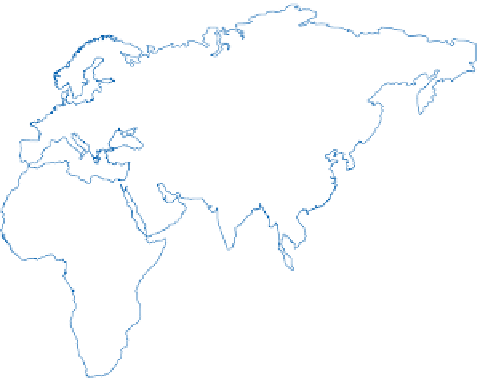Geoscience Reference
In-Depth Information
LONGITUDE
180
160
140
120
100
80
60
40
20
0
20
40
60
80
100
120
140
160
180
90
90
75
75
60
60
45
45
Eastern
Himalayas
California
30
30
Hawaii
Ivory
Coast
Western
Ghats
Sri Lanka
15
15
Philippines
Malaysia
Colombia-
Ecuador
North Borneo
Tanzania
0
0
Western
Amazonian
Uplands
15
15
Madagascar
New
Caledonia
Atlantic Coast
Brazil
30
Southwest
Australia
30
Cape
Province
Central
Chile
45
45
60
60
75
75
9
180
90
160
140
120
100
80
60
40
20
0
20
40
60
80
100
120
140
160
180
Source: After Myers (1990)
society tries to measure and mitigate its adverse impacts
on the natural world. The assessment of such impacts is
made difficult by the lack of many long-term data sets
which would enable conclusions to be drawn. Diversity
can be measured relatively accurately from fieldwork, but
stability is a more elusive property to assess. There are
several different aspects of stability, and they can give
contrasting indications of the stability of a particular
ecosystem.
Long-term data on bird and animal populations appear
to offer the best bet for assessing stability, but such data
are not common. The diversity-stability debate which
has occupied so much attention in the past few decades
urgently needs such field data; it has relied heavily on the
results of laboratory studies and computer modelling for
its predictions.
Future conservation at an international level needs to
concentrate on the eighteen 'hot spots' which contain a
high proportion of the world's species and which are
particularly vulnerable. These all occur in tropical and
Mediterranean biomes, in areas where the pressures of
economic development increase year by year.





























































































































































































































































































































